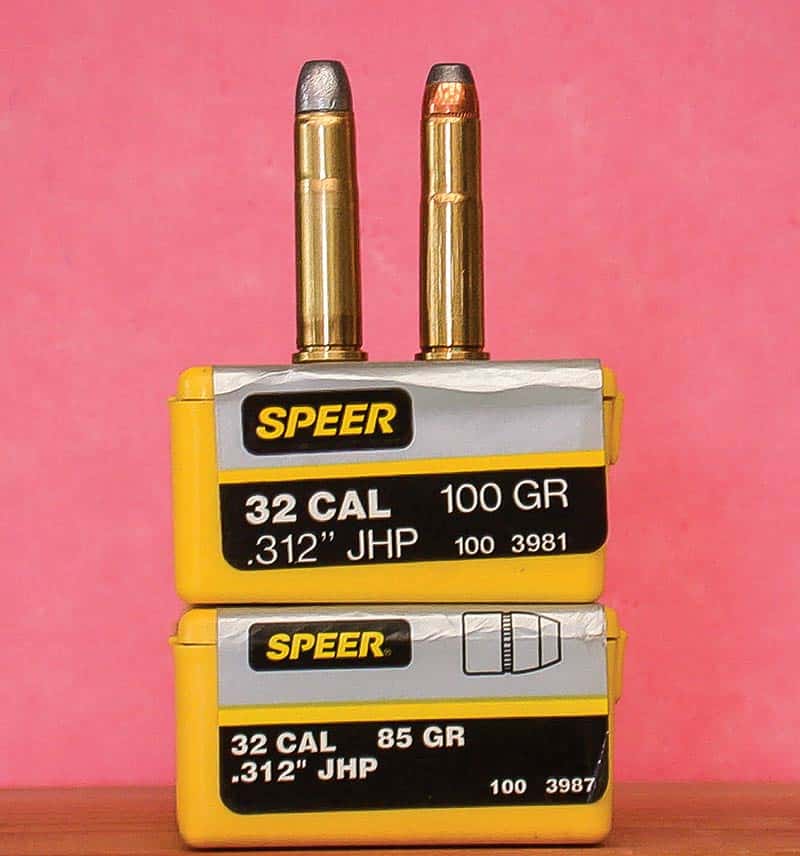Winchester And Marlin
My Winchester M92 .32-20 is still completely original, including the 20″ barrel. With the Speer 100-gr. GDHP over my two most used loads, it does everything and anything I can expect with the original factory iron sights. Using 5.0 grains of Unique gives me a very mild shooting 1,242 fps with three shots in 3/4″ at 50 yards. My most-used load — 10.0 grains of #2400 — clocks out at 1,608 fps with three shots in 1-1/8″.
My serious cast bullet over the years for .32-20 sixgun or levergun is the old Lyman #311316. This flat-nosed, gas-checked bullet weighs just under 120 grains when sized and lubricated. When loaded over the same 10.0 grains of #2400, it clocks out at 1,627 fps and puts three shots in 1-3/4″ at 50 yards. It does all this while being the slickest handling levergun ever made.
My Marlin .32-20 is of more recent vintage and came originally with a 20″ barrel and a half-length magazine tube. To make it better suited to my needs I had the barrel cut back to 18-1/2″ and fitted with a full-length tube. I altered my Marlin top loads with the Speer 85 and 100-gr. bullets, measuring right at 2,300 and 2,000 fps respectively. The 100 has proven to be more accurate than the 85 and both loads are dynamite on varmints.
My longtime favorite “heavy” load for the .32-20 is 10.0 grains of #2400 using Lyman’s 120-gr. gas check bullet. It works just as well in the Marlin as it does in the Winchester .32-20. This load also works fine with Speer’s 100 JHP clocking out at 1,760 fps and a group of only 7/8″ for three shots at 50 yards. The Marlin 1894CL, with a little experimentation, exhibits exceptional accuracy with both cast and jacketed bullets. With the Speer 100-gr. JHP, loads average well under 1″ for three shots at 50 yards with 10 grains H4227 and 9.0 grains AA#9 both giving identical muzzle velocities of 1,600 fps, not to mention three-shot, 50-yard groups of 1/2 and 3/8″ respectively. Eleven grains H110 increases the muzzle velocity to 1,765 fps and a one-hole 1/4″ group. My heaviest loads using 15.0 grains IMR4227 and CCI’s #400 Small Rifle Primers yields just over 2,000 fps and a group of 7/8″ for three shots. I use this load only in the Marlin 1894CL. All of these tight Marlin groups were accomplished with a scope.
While Winchester’s only .32 chambering in the Model 92 was the .32-20, Marlin has proven to be more versatile. As mentioned, Cowboy Action Shooting has had much to do with the resurrection of older cartridges.










